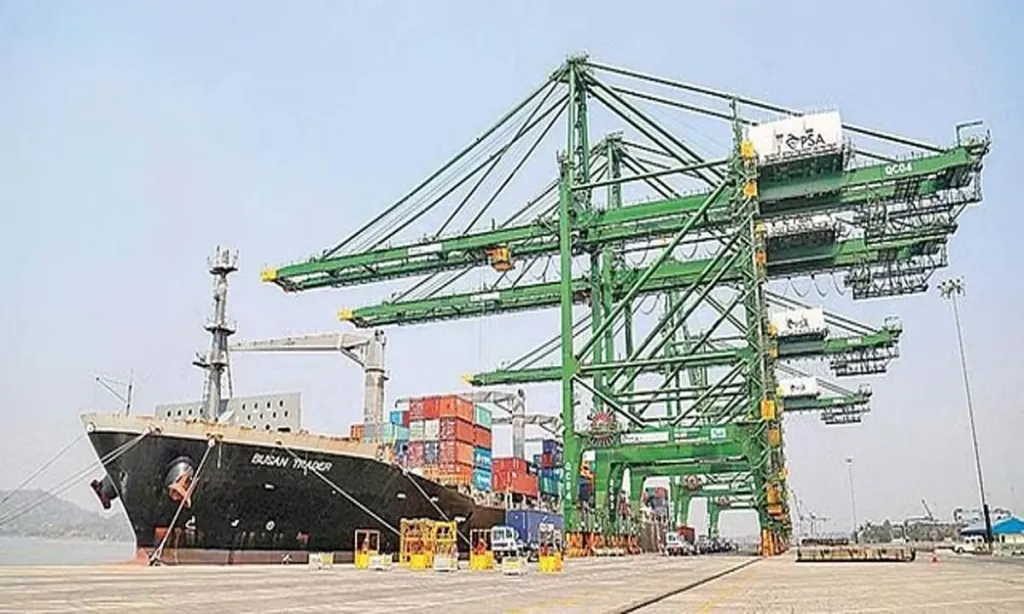
MUMBAI: The country’s external balance is stronger than expected due to strong flows, a Wall Street brokerage said on Tuesday, estimating India’s current account deficit to decline to 1% this year, a sharp decline from 2% last year. Is. Current account deficit refers to the shortfall in a country’s ‘current’ transactions with the rest of the world. Current transactions include all transactions that do not create an obligation to return money or create any ownership interest. Thus, a high current account deficit indicates that the country is not able to meet its ‘current’ needs – such as buying goods from abroad – through other such transactions, and has to rely on capital inflows. . Goldman Sachs said India’s current account deficit will decline from $67 billion to $39 billion, or 1% of GDP, in fiscal 2023. Earlier it had predicted 1.3% CAD. For the next fiscal year (FY25), it expects CAD to grow at 1.3%, not 1.9% as previously estimated. The main reason for this, it said, was to reduce their oil price forecast in 2024 to US$81 per barrel, from more than US$90 earlier. It also said that India’s services exports – such as IT and tourism – continue to surprise on the positive side. Apart from the current account, Goldman Sachs was optimistic about India’s overall external balance, including the capital account due to CAD, strong capital inflows, adequate foreign exchange reserves and low external debt. This, combined with expectations of a weaker dollar due to the possibility of five US Fed rate cuts this year, suggests a “Goldilocks” environment for the country’s external balances, it said. The brokerage expects strong capital inflows in 2024, driven by strong equity portfolio flows as the Fed begins the easing cycle; Strong credit flows as the bonds are included in JPMorgan’s global government bond index from June 2024; And the country will continue to benefit from regional supply chain diversification from higher FDI inflows. It said these capital inflows will help offset lower net corporate dollar borrowing flows due to larger maturities of earlier loans coming due in 2024; overall, the balance of surplus will reach US$39 billion in FY24. should go up, but will fall to US$27 billion. Next financial year. The country’s oil imports fell to US$164 billion in the January-November 2023 period from US$189 billion a year ago as oil prices were 18 per cent lower during the period. Similarly, the services trade surplus is also increasing as exports of both merchandise and software services have witnessed unprecedented growth. The report expects US growth to remain resilient, service exports to remain strong, and the services trade balance to increase from US$148 billion to US$158 billion. Both of these will balance the growth in gold imports which stood at USD39.6 billion so far and could close the financial year at USD44 billion from USD37 billion in FY23. Non-oil and non-gold imports on the other hand are coming in slightly higher than earlier forecasts, driven mainly by electronic goods and machinery imports among key sub-components, and closed the year at USD440 billion to USD445 billion. It is possible Net FDI inflows stood at US$17 billion by October 2023, compared to US$36 billion a year ago, while both equity and debt inflows increased in the third quarter and at current going rates they are expected to reach US$24 billion this fiscal year. 28 billion US dollars. The report observed that the country’s external vulnerabilities remain low with a comfortable import cover at around 11 months, higher than the pre-pandemic average of 9.5 months, and foreign exchange reserves as a share of external debt at 99 per cent. is at its highest level. In the last 10 years, excluding the pandemic years. Regarding the rupee, the brokerage said it views the rupee as a currency with relatively low volatility. But were quick to note that despite this “Goldilocks” scenario, the rupee is likely to underperform most EM Asia currencies as they expect the RBI to accumulate inflows and build forex reserves at every opportunity. He expects the dollar/rupee pair to remain around 83-82 in the next three to six months, and then rise slightly to 81 in the next 12 months.















